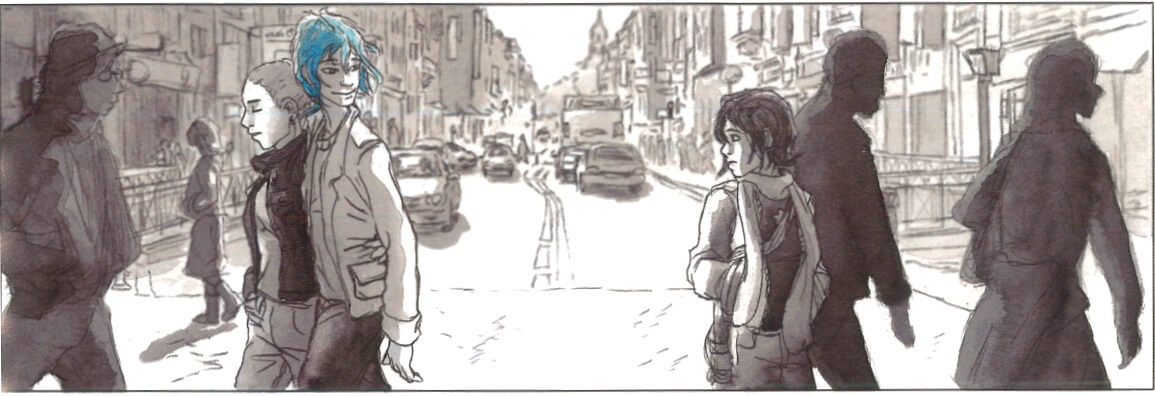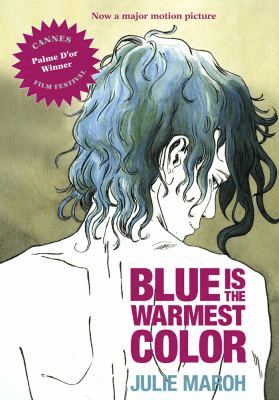Has a book ever made you sad, happy, thoughtful, hopeful, angry or excited? If the author has done their job, reading a book should open you up to one (or all!) of these emotions. One of the most important expressions of emotion is through art/illustration. Pictures grab your attention right away, where words might take a few minutes to sink in. While I’m a huge lover of words, there’s something different about the way an illustration can affect you immediately, like a lightning bolt to your heart.
There’s no better example of how illustration enhances emotional impact than Julie Maroh’s graphic novel Blue is the Warmest Color. Originally published in French, Maroh’s novel stars shy teenager Clementine and beautiful, confident Emma. We begin in present-day France with Emma. Her world features muted blues, greens and yellows. As Emma opens Clementine’s diary, we travel with her to the past—mostly colored in black, white and gray. With one unique exception…BLUE.
Clementine’s handwritten entries function like voice-overs while the action unfolds in illustration and dialogue. As we follow Clementine’s teenage self, we see glimpses of blue that reveal important details about her life and emotions: first in the color of her diary, then in the shirt of a boy she has a crush on and finally in a chance encounter with a beautiful blue-haired stranger…

When Clem sees Emma, everything changes. We see the gray, colorless world of Clem’s home, school and friends, but every scene with Emma is pulsing with bright blue. It reminds me of that heart-stopping moment when you see someone you love in a crowd, or the spark of flirtation or the warmth of love. By focusing on just one color, every time you see blue you know it’s something important and meaningful.
Clementine’s attraction to Emma is not all smooth sailing, as Clem tries to deny her obvious feelings for women. Also unapproving are Clem’s family and friends, further hindering Clem’s acceptance of herself. “I was happy, but anxious because I felt so great when I was with her, and I was afraid of losing her…. Then suddenly, shame takes over, and I hate myself, and I bury myself in the ball of fire that is screaming to get out of my guts.”
Clementine’s sadness (as well as happiness) moves with the intensity of youth and young love, and asks important questions about life like, “Can love be eternal?” and “What does it mean to really accept yourself?”
Although melancholy, Clementine and Emma’s story feels profoundly beautiful. I found myself flipping back through the novel once I’d finished, and wanting to read it over and over again.

Want to know more? Do you think blue is the warmest (or most beautiful) color? Check out this excellent graphic novel, and be sure to watch the film adaptation as well!
-Adina
Want to find out more?
Check out Blue is the Warmest ColorAdina enjoys cooking and eating (mostly eating), ranting about books and watching movies with her friends. You can find her clerking at the West End branch or relaxing in her cozy apartment.

